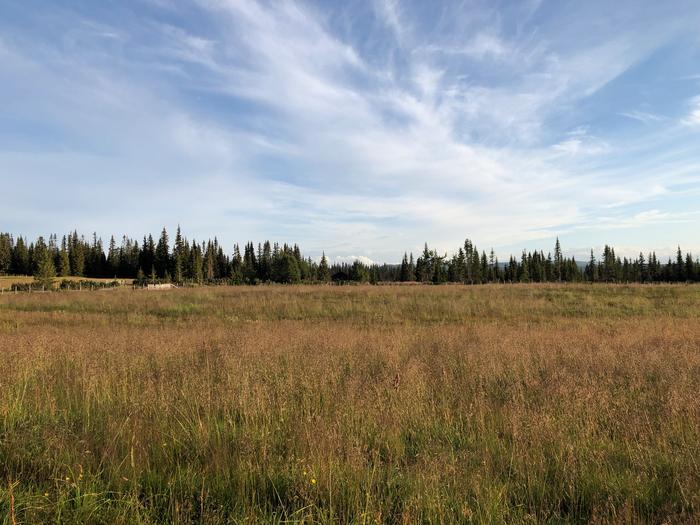Climate change will move and reduce the land suitable for growing food and timber, putting the production of these two vital resources into direct competition, a new study has found.

Credit: David Edwards
Climate change will move and reduce the land suitable for growing food and timber, putting the production of these two vital resources into direct competition, a new study has found.
The sight of vineyards in Britain is becoming more common as hotter summers create increasingly suitable conditions for growing grapes. But behind this success story is a sobering one: climate change is shifting the regions of the world suitable for growing crops.
Researchers at the University of Cambridge have uncovered a looming issue: as the land suitable for producing our food moves northwards, it will put a squeeze on the land we need to grow trees. The timber these trees produce is the basis of much of modern life – from paper and cardboard to furniture and buildings.
They say that the increasing competition between land for timber production and food production due to climate change has, until now, been overlooked – but is set to be an emerging issue as our demand for both continues to increase.
Under the worst-case scenario for climate change, where no action is taken to decarbonise society, the study found that over a quarter of existing forestry land – around 320 million hectares, equivalent to the size of India – will become more suitable for agriculture by the end of the century.
Most forests for timber production are currently located in the northern hemisphere in the US, Canada, China and Russia. The study found that 90% of all current forestry land that will become agriculturally productive by 2100 will be in these four countries.
In particular, tens of millions of hectares of timber-producing land across Russia will become newly suitable for agriculture – more than in the US, Canada and China put together – with conditions becoming favourable for potato, soy, and wheat farming.
“There’s only a finite area of suitable land on the planet where we can produce food and wood – two critical resources for society. As climate change worsens and agriculture is forced to expand northwards, there’s going to be increasing pressure on timber production,” said Dr Oscar Morton, a researcher in the University of Cambridge’s Department of Plant Sciences who co-led the study.
“We’ve got to be thinking fifty years ahead because if we want timber in the future, we need to be planting it now. The trees that will be logged by the end of this century are already in the ground – they’re on much slower cycles than food crops,” said Dr Chris Bousfield, a postdoctoral researcher in the University of Cambridge’s Department of Plant Sciences and co-leader of the study.
Global food demand is projected to double by 2050 as the population grows and becomes more affluent. Global wood demand is also expected to double in the same timeframe, in large part because it is a low-carbon alternative to concrete and steel for construction.
Shifting timber production deeper into boreal or tropical forests are not viable options, because the trees in those regions have stood untouched for thousands of years and logging them would release huge amounts of carbon and threaten biodiversity.
“A major environmental risk of increasing competition for land between farming and forestry is that wood production moves into remaining areas of primary forest within the tropics or boreal zones. These are the epicentres of remaining global wilderness and untouched tropical forests are the most biodiverse places on Earth. Preventing further expansion is critical,” said David Edwards, Professor of Plant Ecology in the University of Cambridge’s Department of Plant Sciences and senior author of the study.
To get their results, the researchers took satellite data showing intensive forestry across the world and overlaid it with predictions of suitable agricultural land for the world’s key crops -including rice, wheat, maize, soy and potato – in the future under various climate change scenarios.
Even in the best-case scenario, where the world meets net zero targets, the researchers say there will still be significant future changes in the regions suitable for timber and crop production.
The study is published today in the journal Nature Climate Change.
Timber production contributes over US $1.5 trillion per year to national economies globally. Heatwaves and associated wildfires have caused huge recent losses of timber forests around the world. Climate change is also driving the spread of pests like the Bark Beetle, which attack trees.
Climate change is expected to cause areas in the tropics to become too hot and inhospitable for growing food, and make large areas of southern Europe much less suitable for food and wood production.
“Climate change is already causing challenges for timber production. Now on top of that there will be this increased pressure from agriculture, creating a perfect storm of problems,” said Bousfield.
“Securing our future wood supply might not seem as pressing as securing the food we need to eat and survive. But wood is just as integrated within our daily lives and we need to develop strategies to ensure both food and wood security into the future,” said Morton.
Journal
Nature Climate Change
Article Title
Climate change will exacerbate land conflict between agriculture and timber production
Article Publication Date
29-Aug-2024



